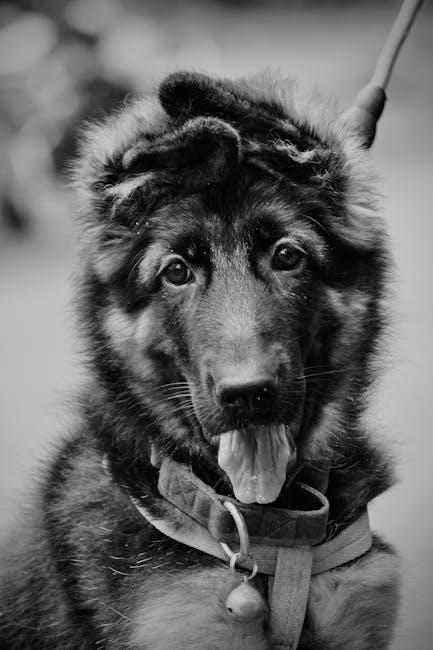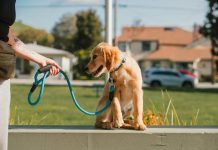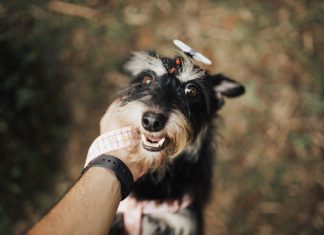Welcoming a new puppy into your home is an exciting and heartwarming experience, filled with joy, cuddles, and endless wagging tails. However, alongside the adorable antics and playful energy, comes the important responsibility of guiding your furry friend into becoming a well-mannered member of your family. As a new pet owner, understanding and implementing essential puppy training techniques is crucial not only for your puppy’s development but also for fostering a harmonious home environment. In this article, we will explore key training strategies that are both effective and compassionate, helping you build a strong, trusting bond with your puppy while setting the foundation for a lifetime of good behavior and companionship. Whether you are a first-time dog parent or looking to refresh your training skills, these techniques will provide you with the tools and confidence needed to navigate the rewarding journey of puppy training.
Building a Strong Foundation Establishing Trust and Communication
When welcoming a new puppy into your home, one of the most crucial steps is to foster an environment of trust and open communication. This foundation is vital for effective training and a harmonious relationship with your furry friend. Begin by ensuring your puppy feels safe and secure in their new surroundings. Create a designated space where they can retreat to, such as a cozy bed or a specific corner of a room. This will not only help them feel at ease but also establish boundaries that are important for their training.
- Consistency: Use consistent commands and signals. This helps your puppy understand what is expected and reduces confusion.
- Positive Reinforcement: Reward good behavior with treats, praise, or playtime. Positive reinforcement encourages your puppy to repeat desired actions.
- Body Language: Pay attention to your puppy’s body language and respond accordingly. This builds a mutual understanding and strengthens your bond.
- Patience: Training takes time. Be patient and gentle, avoiding harsh tones or actions that might instill fear.
By prioritizing these elements, you are not just teaching commands but also nurturing a loving relationship grounded in trust and clear communication. This approach not only makes training more effective but also enriches the companionship between you and your puppy.
Mastering the Basics Essential Commands Every Puppy Should Learn
Welcoming a new puppy into your home is a joyful experience, but it also comes with the responsibility of teaching them essential skills for a harmonious coexistence. Understanding and executing basic commands can greatly enhance your puppy’s safety and your peace of mind. Here are some fundamental commands every puppy should master:
- Sit: A simple command that forms the foundation for more complex behaviors. Use treats and positive reinforcement to encourage your puppy to sit on cue, making this a great starting point for obedience training.
- Stay: Vital for ensuring your puppy remains in place, this command is essential for safety in various situations. Begin with short durations and gradually increase the time as your puppy becomes more comfortable.
- Come: A reliable recall is crucial for off-leash adventures and ensuring your puppy returns to you promptly. Practice this command in a controlled environment before venturing into more distracting settings.
- Leave it: Protect your puppy from ingesting harmful objects by teaching them to ignore unwanted items. Use consistent cues and rewards to reinforce this life-saving command.
These commands not only promote good behavior but also strengthen the bond between you and your furry friend. Consistency, patience, and positive reinforcement are key to mastering these basic yet essential skills.

House Training Tips Creating a Routine for Success
Establishing a consistent routine is the cornerstone of successful house training for your new puppy. Puppies thrive on structure, and a predictable schedule helps them understand what is expected. Begin by setting regular feeding times, as this will naturally lead to predictable bathroom breaks. Take your puppy outside immediately after meals, upon waking up, and before bedtime to reinforce the habit of going potty outdoors. Remember, the more consistent you are, the quicker your puppy will learn.
- Morning Routine: Take your puppy out first thing in the morning. This sets the tone for the day and helps prevent accidents inside.
- After Meals: Puppies often need to relieve themselves shortly after eating. Keep an eye on them and be ready to take them out.
- Evening Routine: Establish a calming bedtime routine that includes a final bathroom trip to ensure a restful night for both of you.
Patience and positive reinforcement are key. Celebrate successes with praise and treats to encourage repeat behavior. If an accident happens, clean it up without fuss and gently guide your puppy to the designated area next time. With time and perseverance, your puppy will learn the ropes and become a well-trained member of the family.

Socialization and Playtime Encouraging Positive Interactions
Fostering positive interactions during your puppy’s early development is crucial for raising a well-adjusted dog. Socialization is more than just introducing your puppy to new dogs; it’s about exposing them to a variety of environments, people, sounds, and experiences. Start by organizing small, controlled playdates with other vaccinated puppies. This not only helps them learn canine social cues but also builds their confidence. Remember to keep these sessions brief initially to avoid overwhelming your pup. Gradually increase the complexity of the environments they are exposed to, such as taking them to parks, busy streets, or pet-friendly cafes.
Playtime is equally important and should be structured to encourage healthy behaviors. Incorporate games that promote bonding and obedience, such as fetch or tug-of-war, but ensure they remain friendly and not too competitive. Rotate through different types of toys to keep their interest piqued and to stimulate different senses. Here are some tips for effective playtime:
- Use toys that are safe and appropriate for your puppy’s size and age.
- Encourage your puppy to share and take turns if playing with others.
- Monitor play to prevent over-excitement and to teach calming techniques when needed.
- Incorporate positive reinforcement, like treats or praise, to reinforce good behavior during play.
By focusing on these aspects, you’ll nurture a sociable, friendly, and well-mannered dog that thrives in a variety of situations.
















